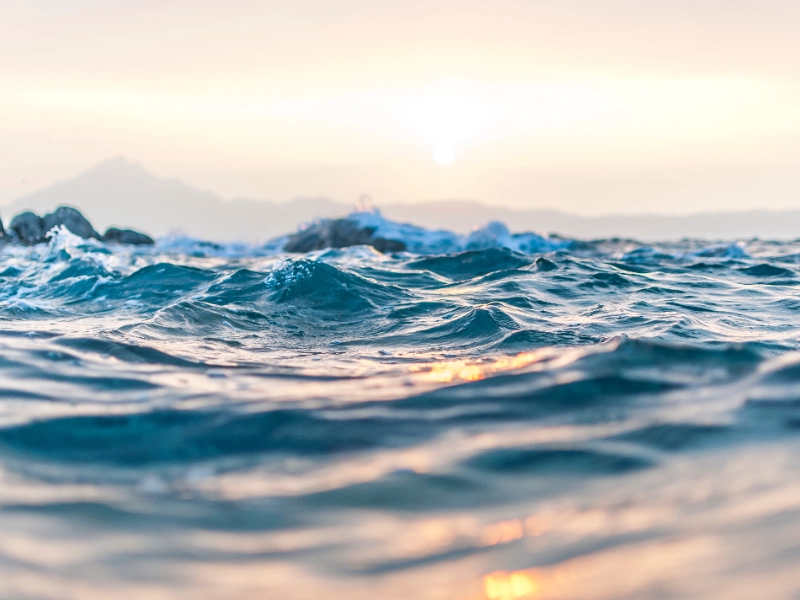The Impact of Climate Change on Our Oceans
Approximately one-third of the carbon dioxide emissions that people release into the atmosphere are absorbed by the ocean, making it a significant heat and carbon sink. Nevertheless, we are approaching its boundaries. Our seas are being impacted by climate change in a variety of ways, including heat, acidification, sea level rise, and altered ocean currents.

Acidification of Oceans
The ocean makes up 71% of our world and is a fascinating and mysterious ecology. However, the ocean is changing significantly below the surface as a result of climate change. This includes altered ocean currents, increasing sea levels, decreased oxygen, temperature increases, ocean acidification, and other human-caused effects. The extra carbon dioxide we release into the atmosphere as a result of burning fossil fuels and other human activity is what causes ocean acidification. The ocean's pH is lowered by a chemical reaction brought on by this carbon entering the water. Although this is a naturally occurring process that takes millions of years to complete, it is happening much more quickly currently and is significantly affecting marine life. Higher acidity, for instance, hinders the ability of shell-forming species, such as clams and oysters, to form their skeletons. As a result, they will be less safe from predators. Researchers are using a variety of techniques to investigate ocean acidification, such as building mesocosms, which are effectively enormous test tubes.
Rise in Sea Level
The ocean takes up the majority of the extra heat and energy produced by human activities, making it the planet's largest sink of carbon. It is limited, though. And we are running into them, which will have grave repercussions for both our communities and the marine environment. Sea levels increase as a result of warming ocean waters expanding. Ocean oxygen levels are also lowered by this expansion because dissolved oxygen can be dissolved less readily in warmer water. This complicates the process of building and maintaining skeletons for animals that produce shells. In the upcoming decades, thermal expansion, runoff from melting mountain glaciers, and the gradual thinning and collapse of large ice sheets in Greenland and Antarctica will all contribute to the rise in global sea level. Sea level changes cause flooding of low-lying wetlands and coastal areas, erosion of shorelines, and an increase in the flow of salt water into estuaries and groundwater aquifers. The survival of numerous coastal enterprises and towns is at risk due to these changes. Additionally, they diminish the productivity of fisheries and other maritime operations and submerge ecosystems that are crucial for species.
Variations in Ocean Currents
Warm water is transported from the equator to the poles while cool, dense water is returned to the equator by ocean currents, which function as global conveyor belts. They are essential to all life on Earth because they control the temperature and nutrient levels in the oceans. However, a new study by scientists at the Scripps Institution of Oceanography found that these global currents are accelerating due to warmer temperatures. All kinds, from massive fish to microscopic cyanobacteria, will be impacted by this shift. Marine species may find it more difficult to locate food or to get to mating or feeding areas as a result of this shift. Furthermore, as has already occurred at the deep ocean's bottom, it will probably cause the oxygen content of the water to drop. This shift is believed to be the result of the Atlantic Meridional Overturning Circulation becoming weaker due to climate change. The weather and marine life around the world may be significantly impacted if this system collapses.
Fish Populations Changing
When fish populations fluctuate, so do their surroundings, and this affects a variety of other species—including larger predators. For instance, smaller prey species may migrate to colder waters when the ocean gets too warm. Larger predators will be left with fewer fish to eat as a result, and "dead zones" might grow. Those who depend on fishing for food and a living are also impacted by the decline of fish. For this reason, researchers are examining how climate change affects fishing and ocean biodiversity, as well as the implications for the global fishery. The best defence against the loss of fisheries and marine life is the reduction of greenhouse gas emissions. However, a 4 degree Celsius rise in ocean temperature, which would wipe out many marine species, will not be compensated for by even the most drastic reduction. Therefore, in order to protect the oceans that provide our food, nations must cooperate to limit pollution and carbon dioxide emissions.








